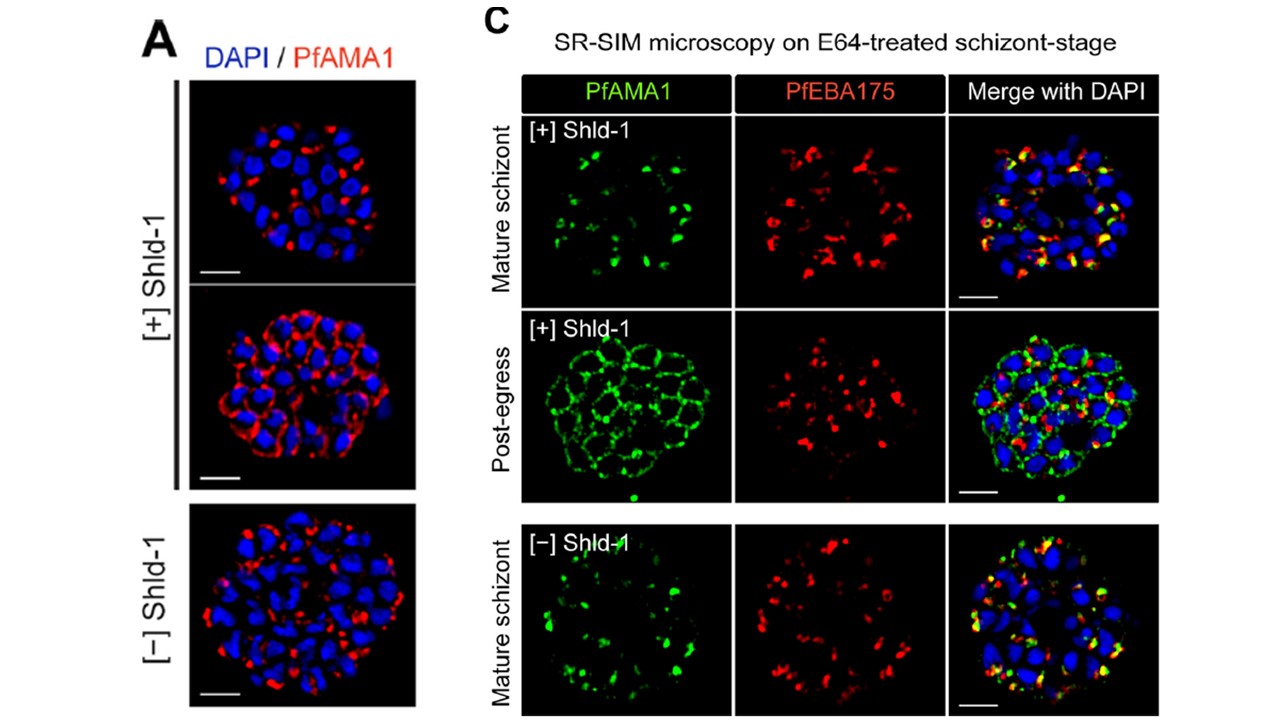Localization of PfEBA175, PfAMA1, and PfCDPK5. (A and B) Schizonts from [] Shld-1 3D7-PfCDPK5DDKnL parasites were fixed, probed with anti-HA and anti-PfEBA175 (A) or anti-PfAMA1 and anti-PfEBA175 (B) antibodies, and visualized by SR-SIM. The xz plane and yz plane are shown at the top and right, respectively, for panel B. The crosshairs indicate one of the limited sites of colocalization. Bars, 2 mm. PfCDPK5 did not colocalize as strongly with PfEBA175 as it did with PfAMA1 (A). The limited regions of colocalization seen with high levels of PfCDPK5 expression largely correspond to the diffuse apical staining of PfCDPK5 and not the more intense punctate regions of PfCDPK5 staining. To confirm this result, we costained parasites with antibodies against PfAMA1 and PfEBA175. As has been hypothesized before by epifluorescence and immunoelectron microscopy, we found that at superresolution, these two proteins show limited regions of colocalization and largely define different subsets of micronemes (B). Thus, when visualized at superresolution, we found that PfCDPK5 and PfAMA1 colocalize but that PfAMA1 and PfEBA175 appeared in different subsets of micronemes. These results provide further evidence for the existence of subsets of micronemes in P. falciparum, potentially with different functions.
Absalon S, Blomqvist K, Rudlaff RM, DeLano TJ, Pollastri MP, Dvorin JD. Calcium-Dependent Protein Kinase 5 Is Required for Release of Egress-Specific Organelles in Plasmodium falciparum. mBio. 2018 Feb 27;9(1):e00130-18.
Other associated proteins
| PFID | Formal Annotation |
|---|---|
| PF3D7_1133400 | apical membrane antigen 1 |
| PF3D7_1337800 | calcium-dependent protein kinase 5, CDPK5 |
